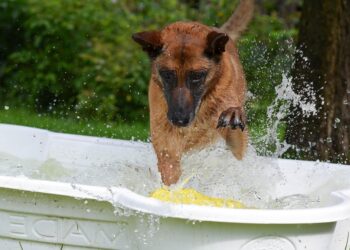[ad_1]
Mastering the Art of Leading: Unleashing the Power of Dog Leading
Leading a dog is more than just holding a leash and walking them around. It requires skill, patience, and understanding of your furry companion. In this article, we will explore the art of leading a dog, and how you can unleash their full potential as a leader. From training techniques to communication strategies, we will cover everything you need to know to become a master dog leader.
Understanding the Nature of Dogs
Before we delve into the art of leading a dog, it is important to understand their nature. Dogs are pack animals, and they thrive in a structured environment where there is a clear leader. In the wild, dogs follow the alpha of the pack, who provides guidance, protection, and direction. As a dog owner, you must establish yourself as the alpha in order to effectively lead your furry friend.
Training Techniques for Effective Leadership
Training is a crucial aspect of leading a dog. By establishing boundaries, rules, and expectations, you can create a harmonious relationship with your canine companion. Positive reinforcement is the key to successful training, as it encourages good behavior and strengthens the bond between you and your dog. Consistency is also important, as dogs thrive on routine and structure.
When training your dog, it is important to use clear and consistent commands. Use a firm but gentle tone of voice, and always praise your dog for good behavior. Avoid punishment or harsh corrections, as this can damage the trust between you and your dog. Instead, focus on positive reinforcement and rewards to encourage the desired behavior.
Communication Strategies for Effective Leadership
Communication is essential in leading a dog. Dogs rely on body language, tone of voice, and facial expressions to understand their human companions. By using clear and consistent signals, you can effectively communicate with your dog and establish yourself as the leader. Pay attention to your dog’s body language as well, as this can give you valuable insights into their mood and behavior.
When communicating with your dog, it is important to be calm and assertive. Dogs respond well to confident leaders who are in control of the situation. Avoid being overly emotional or erratic, as this can confuse your dog and undermine your authority. Instead, project a sense of calmness and confidence, and your dog will follow your lead.
Building Trust and Respect
Trust and respect are the foundation of a strong leader-dog relationship. By earning your dog’s trust and respect, you can establish yourself as the alpha and effectively lead your furry friend. Trust is built through consistency, patience, and positive reinforcement. Respect is earned through clear communication, boundaries, and leadership.
To build trust with your dog, spend quality time together and engage in activities that strengthen your bond. Take your dog for regular walks, play games, and provide plenty of affection and attention. By showing your dog that you are a reliable and caring leader, you can earn their trust and loyalty.
Common Questions About Leading Dogs
1. How can I establish myself as the alpha in my dog’s eyes?
To establish yourself as the alpha, you must be consistent, confident, and in control. Set clear boundaries and rules, and enforce them consistently. Use positive reinforcement to encourage good behavior, and avoid punishment or harsh corrections. By being a calm and assertive leader, you can earn your dog’s respect and trust.
2. What are some effective training techniques for leading a dog?
Effective training techniques for leading a dog include positive reinforcement, consistency, and clear communication. Use rewards and praise to encourage good behavior, and establish a routine that your dog can follow. Be firm but gentle in your commands, and avoid using punishment or harsh corrections. By using positive reinforcement and consistency, you can train your dog to be a well-behaved and obedient companion.
3. How can I improve my communication with my dog?
To improve your communication with your dog, pay attention to their body language and signals. Use clear and consistent commands, and be calm and assertive in your tone of voice. Avoid being overly emotional or erratic, as this can confuse your dog. By projecting a sense of calmness and confidence, you can effectively communicate with your dog and establish yourself as the leader.
Conclusion
Leading a dog is a rewarding and fulfilling experience that requires patience, consistency, and understanding. By mastering the art of leading, you can unleash the full potential of your furry friend and create a strong and lasting bond. By using training techniques, communication strategies, and building trust and respect, you can become a confident and effective leader for your canine companion. Remember to be patient, consistent, and loving, and your dog will follow your lead with loyalty and devotion.
[ad_2]














































